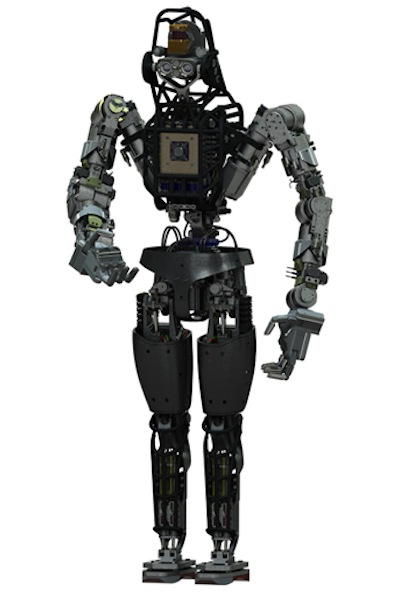MIT, Worcester PolyTech Students Will Program Terminator-Style Robots
Some of the most talented engineering teams from around the country, that took top honors in a competition sponsored by the Defense Advanced Research Projects Agency, have been picked to work on sophisticated, human-like robots that can lift objects and potentially drive vehicles. And two of those teams are from Massachusetts.
Students from the Robotics and Intelligent Vehicles Research Laboratory at Worcester PolyTechnic Institute, and members of the MIT DARPA Robotics Challenge Team, will get a hands on lesson while trying to program ATLAS, a humanoid robot with functioning limbs and hands, which was built by a Waltham-based engineering company. “This is a really big deal. It’s a big deal for a lot of obvious reasons. But besides exposure for our team, we are getting a brand new toy,” said RJ Linton, a Ph.D. Candidate in the Robotics Engineering program at WPI.
ATLAS, developed by Boston Dynamics, was built for DARPA, the agency that holds the competitions and awards the schools with the most promise a chance to work with the humanoids to develop them further.
The top six teams from the first round of the competition—Worcester PolyTech and MIT placed second and third respectively—earned funding and an ATLAS from DARPA to take part in the second round in December 2013, using the robots.
Linton said their lab’s robot would be delivered in the next few days. “It’s a massive, amazing piece of equipment,” he said.
The ATLAS model is a spinoff of an earlier humanoid produced by the Waltham-based robotic company, called PETMAN. However, the latest model has workable hands capable of performing tasks much like a person, and also has a head attached to its wired body.
It’s described by Boston Dynamics as “a high mobility, humanoid robot designed to negotiate outdoor, rough terrain” and help assist first responders during emergency situations like earthquakes or other natural disasters, to keep humans from risking their lives to save others.
From the company:
ATLAS can walk bi-pedally leaving the upper limbs free to lift, carry, and manipulate the environment. In extremely challenging terrain, Atlas is strong and coordinated enough to climb using hands and feet, to pick its way through congested spaces…
ATLAS has 28 hydraulically-actuated degrees of freedom, two hands, arms, legs, feet and a torso, something Linton called “impressive.”
The humanoid is also equipped with a sensor and stereo cameras so users controlling it from an off-site mechanical board can see what ATLAS sees when he explores terrain.
It will be up to students from both MIT, and WPI, to prove their programming efforts can make the best use of the robots capabilities. “We have to take this robot and basically we will try to teach it how to drive a car and remove rubble,” said Linton. “This is a great opportunity for the lab and university, we are excited to participate in this project and competition.”
Boston Dynamics has been synonymous with ground-breaking robotics technologies over the last few years, rolling out similar prototypes that resemble animals, such as the Cheetah robot, and the BigDog.
Below is a sample video showing some of the tasks the robot can already perform:


